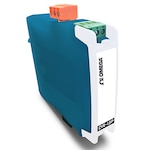What is a Signal Transmitter?
A signal transmitter is a device that transmits data from one place to another. In the case of mechanical equipment, a signal transmitter sends a process signal like temperature, pressure or humidity from a measurement apparatus to an electronic device like a panel meter, controller or computer. In the machinery or test environment, signal transmission is of critical importance. This is because of the nature of testing itself.
On one side, there is a user who needs to read the values measured by the machine, and on the other there's a machine itself, creating data that needs conversion into a readable format. A signal transmitter sends data between the machine and the user. But sending information isn’t enough. This information must be converted to a format that the panel can read. A signal transmitter often includes a signal conditioner that does the job of signal conversion.
Difference Between a Signal Transmitter and a Signal Conditioner
The difference between a signal transmitter and a signal conditioner lies in their function. A signal transmitter transports the signal or creates a pathway for the signal to travel from one point to the other. The signals are also conditioned at the same time. But, a signal conditioner specifically modifies the signal that it receives.
So, why would a signal from a device needs modification? The reason is quite simple. The output from the mechanical devices is generally analogous. This output often contains unwanted signals coupled with them called noise. Besides, most sensor systems produce weak signals in the form of small voltages, electric current, or resistance changes. Feeding these weak signals to a Data Acquisition System will be meaningless.
As such, a signal conditioner helps to bridge the gap between the two sets of devices. It forms an essential circuitry between the sensing system and the data acquisition system to condition the output. It excites, scales, or buffers the output signal and sends it for further processing.


